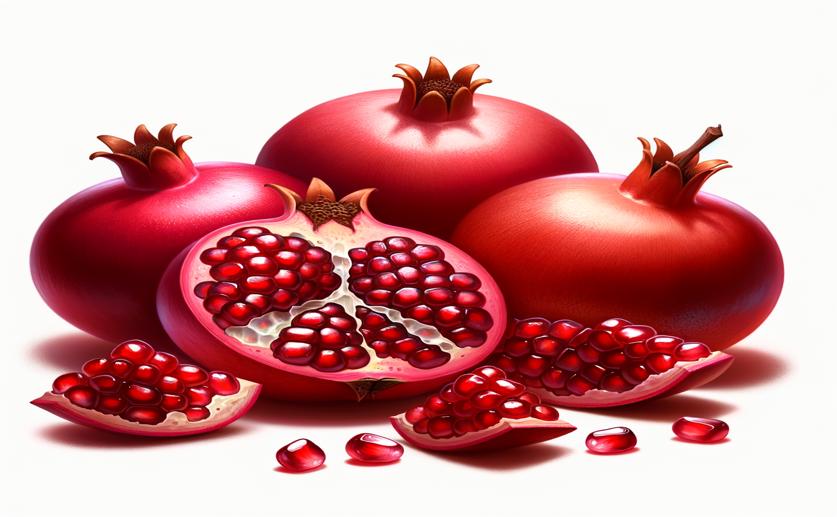
Exploring Peel Color Differences in Red Pomegranates
Jim Crocker
2nd May, 2024

Image Source: Natural Science News, 2024
Key Findings
- Study at Nanjing Forestry University found why some pomegranates are red and others purple-red
- Purple-red 'Moshiliu' pomegranates have higher levels of certain pigments from early growth stages
- Specific genes and proteins (MYB transcription factors) regulate the color differences in pomegranate skins
References
Main Study
1) Comparative transcriptomic and metabolomic profiles reveal fruit peel color variation in two red pomegranate cultivars.
Published 1st May, 2024
Journal: Plant molecular biology
Issue: Vol 114, Issue 3, May 2024
Related Studies
2) Isolation and functional analysis of a MYB transcription factor gene that is a key regulator for the development of red coloration in apple skin.
Journal: Plant & cell physiology, Issue: Vol 48, Issue 7, Jul 2007
3) MYB5-like and bHLH influence flavonoid composition in pomegranate.
4) A pomegranate (Punica granatum L.) WD40-repeat gene is a functional homologue of Arabidopsis TTG1 and is involved in the regulation of anthocyanin biosynthesis during pomegranate fruit development.
5) MYBs Drive Novel Consumer Traits in Fruits and Vegetables.



 18th April, 2024 | Jim Crocker
18th April, 2024 | Jim Crocker